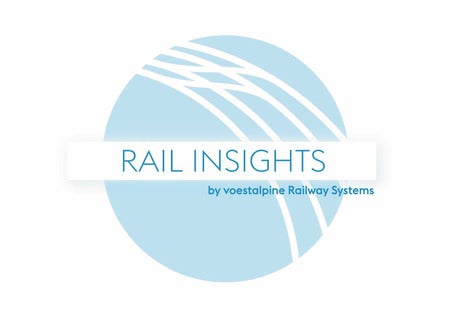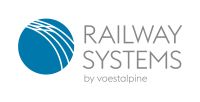
Despite being the most eco-friendly mode of transportation, railways still produce emissions. In Austria, train operations and infrastructure each contribute 50% to the railway sector’s emissions. This shows a big potential for reduction. Cement (used in concrete) and steel are the main contributors to the railway’s carbon footprint. Taking care of these sources is very important for meaningful progress.
Improving track quality and longevity
A key strategy for reducing emissions involves improving the quality and extending the service life of tracks. Renewing tracks is costly and resource-intensive, so reducing wear and tear factors like corrugation and head checks is essential. Constant maintenance, and designing rails to be as resistant as possible from the outset are critical.
High-quality base materials, combined with specialized heat treatments, have proven effective. Doubling the service life of rails means halving the resources and environmental impact associated with their production. However, there’s no one-size-fits-all solution. Different tracks have unique needs, requiring the industry to adapt to flexible requirements.
The need for systemic and holistic thinking
The future of sustainable rails depends on a more systemic and holistic approach. Traditionally, manufacturers supplied products, and operators used them until the end of their lifespan. Now, a shift towards cooperation is necessary. Sharing data and know-how between operators and manufacturers is crucial for increasing service life and improving sustainability.
The focus must be on circular economy principles, material cycles, and alternative products to reduce CO2 footprints in infrastructure construction. With increasing global demand for scrap metal and the rise of national circular economy strategies, scrap will become a valuable resource. Utilizing scrap locally and within the sector is essential.
Life cycle assessment: A comprehensive approach
Creating sustainable rails involves more than just production improvements; it requires a comprehensive view of the complete product life cycle. This is where life cycle assessment (LCA) comes into play, systematically deciding on and collecting environmental impact data across all stages of the lifecycle. Environmental Product Declarations (EPDs) are a result of these efforts, providing transparent and specific data on the environmental impact of products.
Merging environmental and economic performance
Cost efficiency is a critical factor for operators alongside rail longevity. Research is now focusing on combining lifecycle assessments with lifecycle costs, including environmental pricing schemes. This ensures that environmental impacts like CO2 equivalents are included in cost-based decisions, making a large difference.
For example, on the European railway corridor from Genoa to Rotterdam, using 400 UHC® HSH® steel instead of standard rail steel R260 can extend the rail service life in narrow curves from 2.3 years to over 14 years, resulting in a CO2 equivalent savings of more than 40%. Such advancements demonstrate the big potential for emission reductions.
Transforming steel production for a green future
Rails, naturally sustainable due to their steel composition, can be recycled endlessly. However, current production methods heavily rely on primary materials, including iron ore and coking coal. voestalpine is leading the way in transforming steel production to reduce CO2 emissions. Our plan is a step-by-step reduction, starting with a 30% reduction through the introduction of electric arc furnaces powered by renewable energy. The end goal is carbon-neutral steel production by 2050.
A vision for sustainable rail transport
The vision for the future is clear: use the right product for the right application to achieve maximum service life and contribute to sustainable transport. When rails reach the end of their life cycle, they should be recycled into new rails, following the principles of a circular economy.
At voestalpine Railway Systems, we are committed to leading the way towards a sustainable railway life cycle. Thank you for joining us on this journey. Stay tuned for the next episode of Rail Insights.

